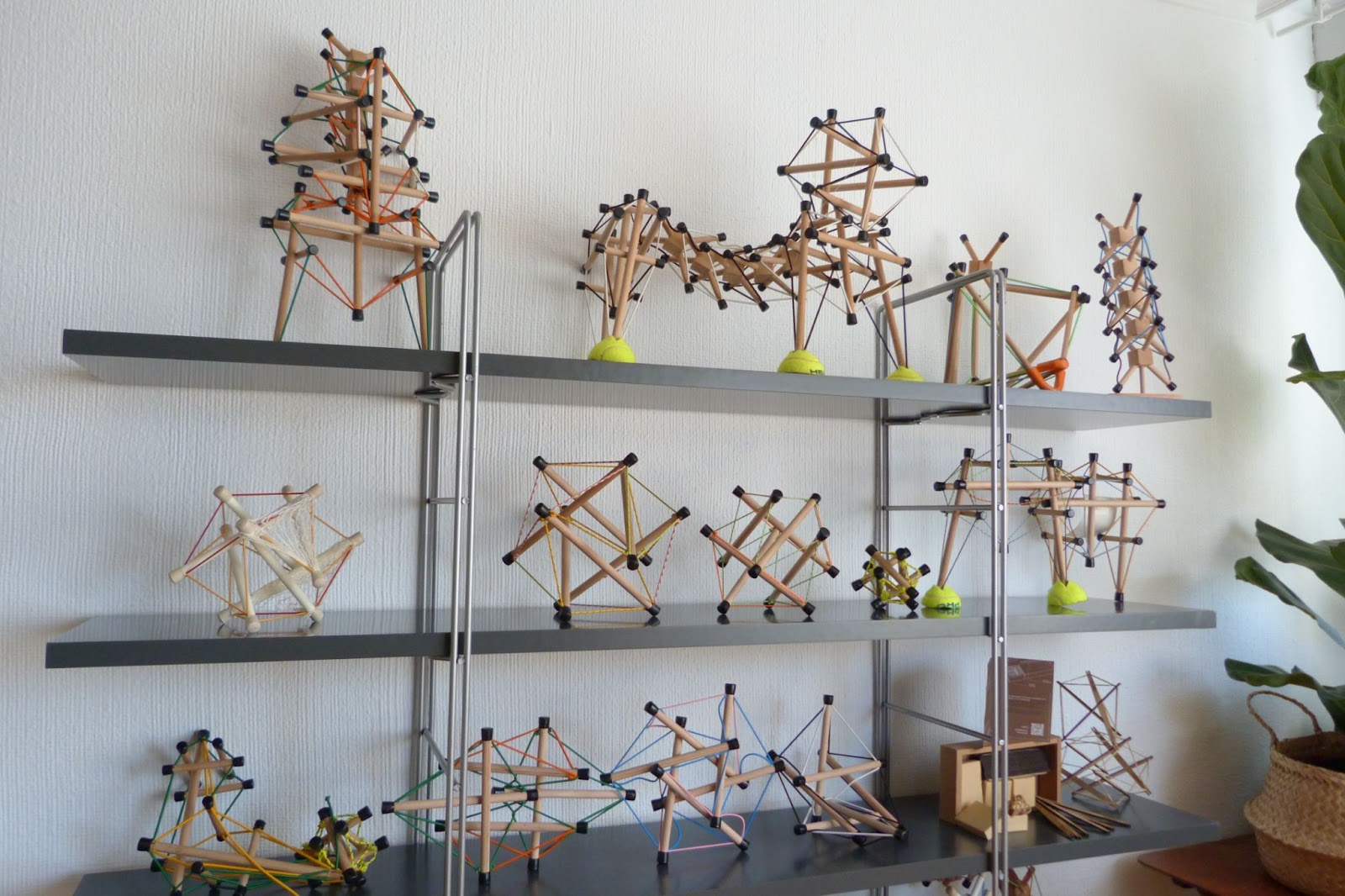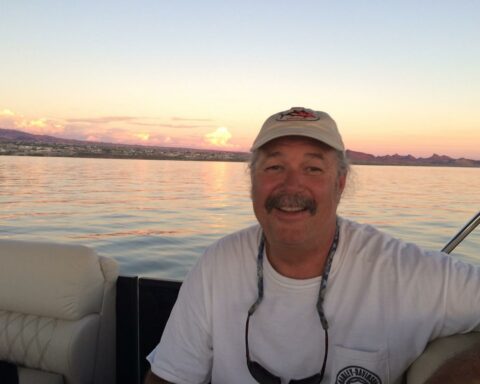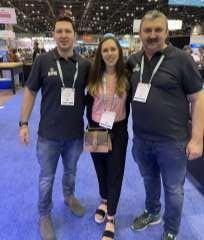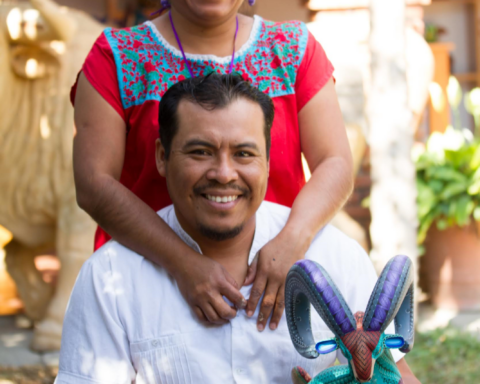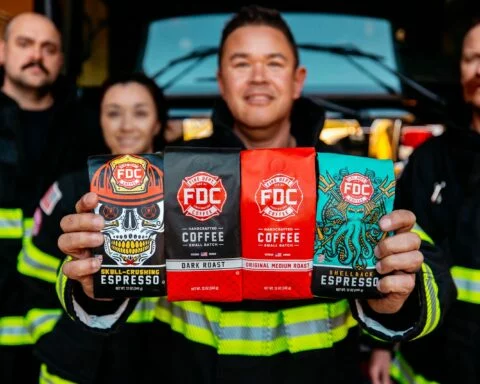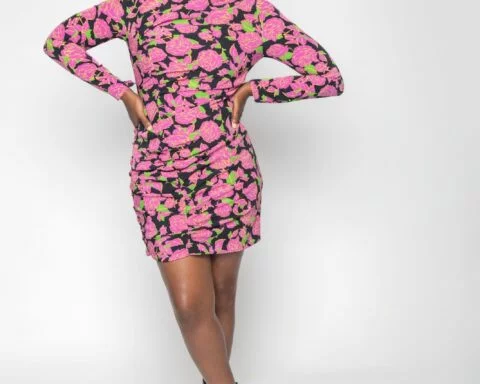Artefactpro´s name comes from my admiration to the word “artifact” due to its double meaning: It can have positive connotations if you use it to refer to a tool or object made of different pieces for a concrete task or to refer to something you don’t really know what it’s for, what material is made of or what its functionality is (for example: explosive artifact vs UFO artifact). You can also find the word in several scientific research papers; clinicians may also refer to metal elements in radiography images as a rough artifact.
I knew my company’s name was going to include the word “artefacto” (Spanish for ‘artifact’), and for one year that is how we were calling the models, ‘artefactos’. Once I decided to formally start the company in December 2015, the web designer made a marvelous proposal: he suggested that we add pro at the end of the name to make it clear that it was a product for professionals. I remember thinking that it was a beautiful idea. It gave the name so many meanings, since it contains 3 different words: ‘arte’ (Spanish for ‘art’) since our products are artisanal, ‘fact’ because they are representing a veridic structural principle from all the things, structures and beings, and ‘pro’ because it is made for professionals. So Artefactpro was named.
We develop tensegrity DIY kits and tensegrity structures already built. And you may be wondering, what is tensegrity? Tensegrity is a structural and design principle that applies when a discontinuous set of compression elements is opposed and balanced by a continuous tensile force, thereby creating an internal prestress that stabilizes the entire structure delineating the system spatiality and behavior. In the words of one of his creators, Richard Buckminster Fuller, “nature’s forms were the result of matter being acted upon by forces.”
The way I see it, I like to define tensegrity as the representation of forces and elements and the way they are related, allowing forms to be shaped. So, this is what we do, we create tensegrity structures for people to build, understand and feel this new paradigm applied to the body movement reasoning.
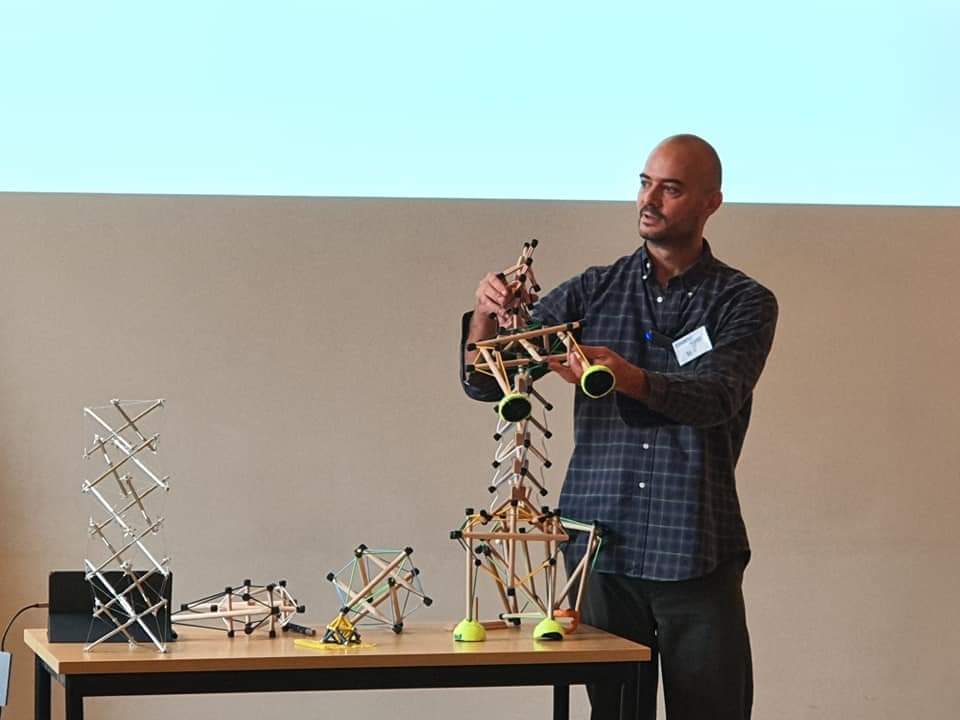
My name is Fernando Tejero, a passionate physiotherapist based in Madrid and the founder of Artefactpro a tensegrity structures company. I’ve always been fascinated with nature, especially with insects, marine life and birds. I’ve also had an interest in engineering, mostly in great feats, milestones and catastrophes.
I first came across the concept of tensegrity in 2007, thanks to Professor Andrzej Pilat in a Myofascial Induction Technique™ (MIT) course. I remember very clearly how this whole adventure started back in January 2014. I was working as an assistant teacher at Tupimek (myofascial therapy school) in El Escorial, Madrid, and one of the students asked how they could get one of these tensegrity structures. I talked to her about the models and tutorials that were available back then. She surprised me by answering: “fortunately I have a handy husband, he will build mine”. That’s when I realized that I also wanted to build my own structures. After several attempts at cutting some struts by myself, I realized I was going to need help from a carpenter if I wanted to develop a quality model. I had several requirements in mind: spirited behavior, hidden knots and rubber bands with different colors.
Once we succeeded at developing a model that met the requirements, it became clear to me that everyone would need to have a tensegrity structure in their hands sooner or later. They would help my professional colleagues in movement and medicine fields and students to comprehend and explore this new way of understanding physics and mechanical behaviors. It’s easier to understand this complex and abstract concepts when you have a physical model in your hands.
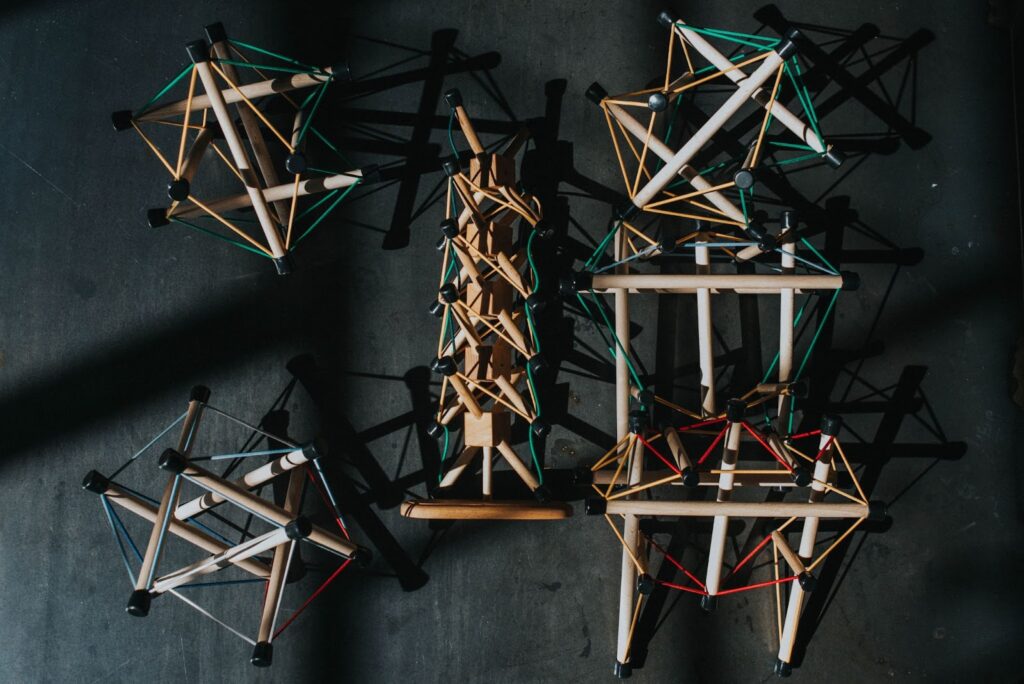
While diving deeper into my research about tensegrity with this new prism, I found Mr. Tom Flemons website. Mr. Flemons was an outstanding, inspiring and talented inventor and artist. In his website you can find deep research, knowledge, applications, resources, models and much more. By the end of 2014, when I contacted him asking for some advice or schemes on how to develop some of his spectacular models such as the leg, arm or masts, he was not building more tensegrity models for an undefined time as he was collaborating with NASA landing robotics laboratory. Instead, Mr. Flemons resolutely encouraged me to build my own 6 struts model. A few days later, I made up my mind about starting a tensegrity structures business, since I believed (and still believe) tensegrity would change human thinking. Shortly afterwards I started developing the spine and pelvis models.
As I said to Mr. Flemons in one of our emails, his structures should be used in all schools, universities, and courses around the globe. I firmly recommend everyone to grab their favorite drink and to dive into Mr. Flemons website intensiondesigns.ca, specially into the archive assembled by Dorothea Blonstein.
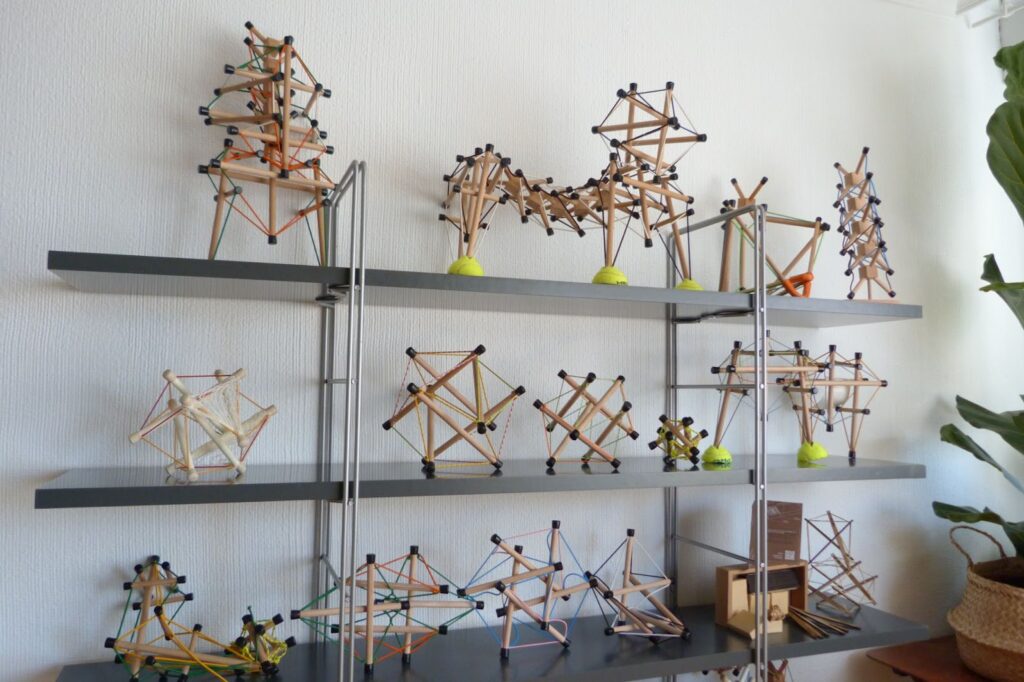
One of the challenges I face as a business is creating a physical model that successfully represents a new paradigm for medicine and movement. I welcome the chance to create a product that is assembled by hand with different color bands to make it easier to visualize the three dimensions, that is long-lasting, has a spirited behavior and is even decorative.
It took nearly a year to develop the final prototype for the 6 struts model. I consulted with several carpenters, tried many different rubber bands brands with different tensions and many tests were made. Finally, all this research came together and it wasn´t that difficult to develop the spine. The pelvis, though, is a story for another day.
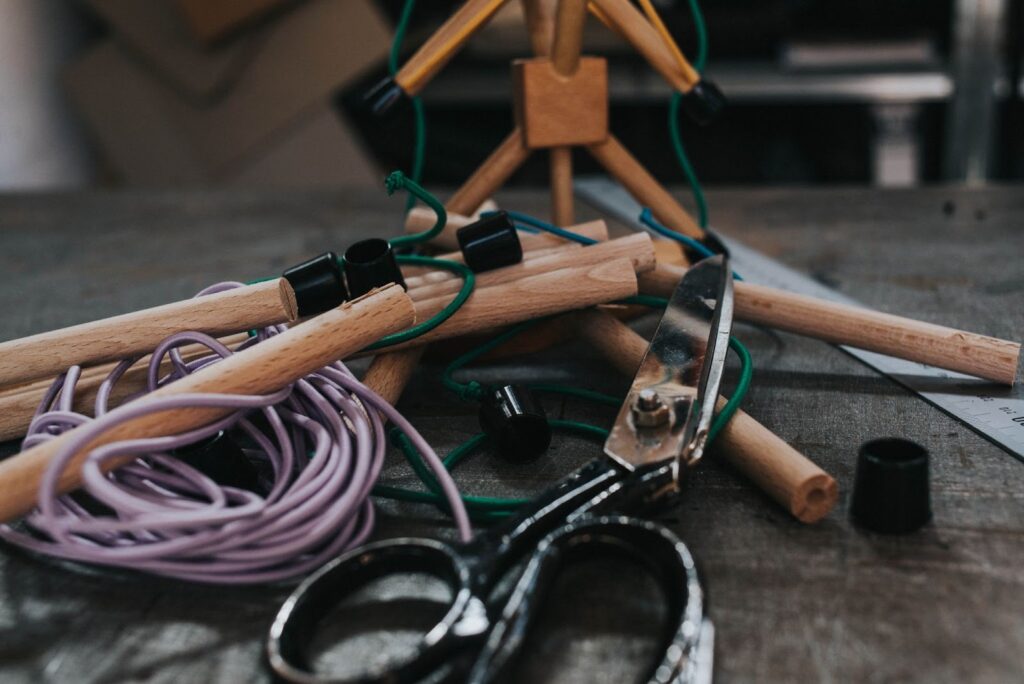
As a market challenge I found clients expectations to be unrealistic. For example, one of our clients was interested on our tensegrity horse ‘Dyna’ but demanded that the model moved exactly as a living horse. Even among my colleagues there can be misunderstandings. I recall once creating a mast with nonelastic strings to be more truthful to the concept of tensegrity, but one partners insisted that it must behave as a living tissue or being. It would be fantastic if our models could perfectly represent nature themselves, but they can´t replace the teacher or the speech to explain what tensegrity and biotensegrity is. The aim of an Artefactpro tensegrity model is to improve the comprehension of the concept through the palpation and visualization of the elements and their interactions increasing the understanding and its applications. If nobody is using them, they simply become tensegrity sculptures.
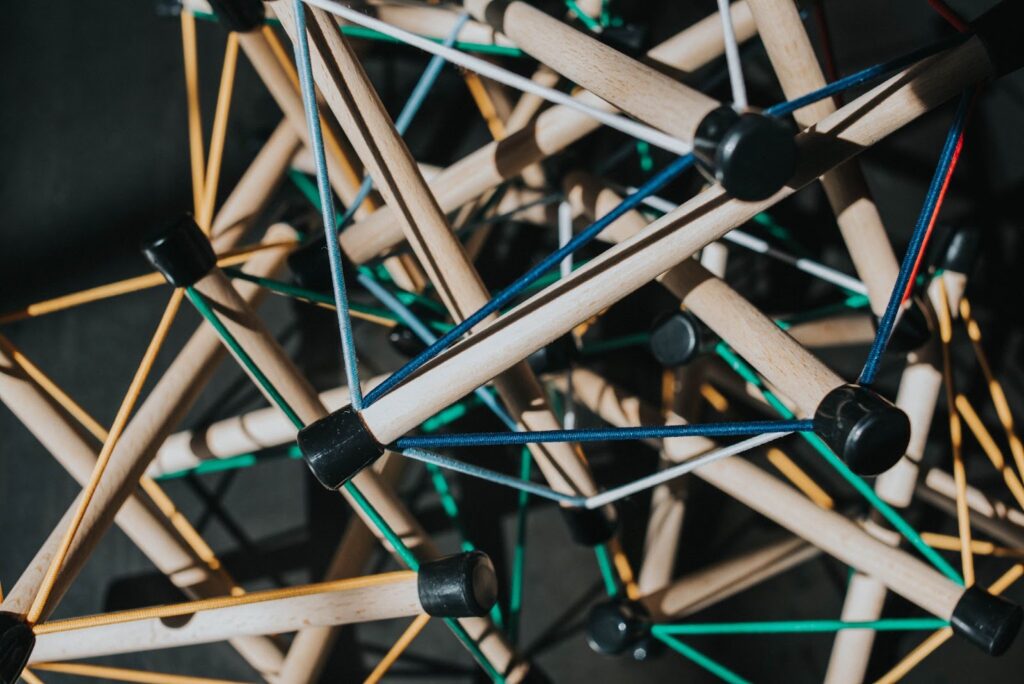
A great opportunity for the market arose during lockdown: the biotensegritea parties, an initiative by Susan Lowell de Solórzano, Chris Clancy and Graham Scarr. They offered a weekly golden opportunity to learn and share information, knowledge and an understanding of the applications of tensegrity on several fields and from different perspectives. To give you some context, Susan wrote two fantastic books. I highly recommend both, the one titled Everything Moves, how biotensegrity informs human movement is a fantastic starting and clarifying point on the topic of tensegrity. Chris has a marvelous e-learning platform embodiedbiotensegrity.ca, where she shares weekly content in the hope of creating synergies, finding new applications and interviewing different pioneers. Graham authored another book which is now on its second edition named Biotensegrity the structural basics of life. I strongly recommend it if you want to have a deep technical understanding of tensegrity’s applications to the body movement. You can find a recording of the meetings on YouTube at Biotensegrity Archive channel, an initiative held by Dr. Stephen M. Levin (first orthopedic surgeon to start rethinking the biomechanics under this new paradigm, father of the term biotensegrity, and a close collaborator of Mr. Flemons). You can find a great amount of Dr. Levin’s material on this subject at biotensegrityarchive.org. The biotensegritea parties were also sponsored by Handspring Publishing Ltd.: an unbeatable publishing ‘home’ known for editing tons of books on the topic. In these parties we also get to know our competitors, such as the incomparable Gerald de Jong (GetPretenst) who does spectacular models.
This kind of initiatives help to promote online courses, meetings, and learning platforms. I am currently enrolled in three of these platforms: embodiedbiotensegrity.ca (previously mentioned), The Fascia Hub hosted by Jan Trewartha in the UK and the Tensegrity Assisted Therapy course provided by Mariana Barreto and Leonyd Blyum.
Another great opportunity for our business is the synergies created around this concept. Thanks to these initiatives and all the different courses and readings, I realized there was room for improvement in our products. By listening to the feedback from our target audience, it became clear that there a was a huge demand for a DIY model. I worked together with Andreína Graterol and Cristhian Castro to create our “Kit TenseBio 1.0”. This product will help people understand and apply architecture and design principles from a tensegrity point of view. It will also be used during the courses and workshops hosted by #TenseBio, where participants will learn how to knit cells and tissues in a fun, versatile and easy way.
We also added “Something in Between” kit to our catalog. This kit allows you to build your own structure with elastic bands, inelastic cords or mix of both letting you experiment with different construction possibilities and behaviors. We will soon add many more products to our DIY line like, for example, our pelvis locomotion and spine vertebrae.
On a different note, I got the chance to attend symposiums and meetings that I would never have attended without the structures. For instance, in 2019 I went to the Fascial Connection summit in Argentina where I had the opportunity to meet Rodrigo Abett owner of osteopilates y pilatesqi in Chile. Currently, together with Mariana Barreto, Andreína Graterol, Cristhian Castro, Rodrigo Abett y Felipe González, we’re shaping an initiative that will offer information, workshops, innovations and much more regarding the application of tensegrity in different fields for Spanish speaking public. Our aim is to get our colleagues to find solutions by thinking differently about the challenges and procedures by applying a tensegrity reasoning.
Advice to others about business
Running a business is chaotic. Most of the time you won’t be able to stick to a fixed schedule and it will take some time to receive a stable income. For example, sometimes I start working early in the morning and lose track of time, and suddenly realize it’s already way past lunchtime. When you are passionate about your project, you will find yourself thinking about it even when you are with friends and family. You will also face a lot of criticism from the people around you, who will only point to the business’ problems and will try for you to give up. My advice would be not to take it personal; you should rather take the chance to listen to them and see the room for improvement for your business.
When starting a business, you should focus on the way your services and products will improve people’s lives, rather than only thinking about the money. Another key point to look forward to when starting a business is the fact that you will meet people with different ideas and points of view. Be it by collaborating or competing with them, both their products and yours will see a great improvement!
Finding a solution for one person could be good for tons of people! Even if some of your products don’t sell as you expect you shouldn’t consider it a failure. For example, sometimes our clients find our videos on social media clarifying enough and they think they don’t need to buy our structures to fully understand the concept. This is still a triumph for us, as we are spreading the knowledge about this concept, potentially helping a lot of people. My final advice: “do not hesitate to run a business if you believe you’re going to improve people’s lives, It´s just feels so good when you are on the path”
- Eye Spy: Worldwide Eye Color Percentages - April 19, 2024
- Elevate Energy, Soothe Stress, And Peak Performance with The New UNBEETABREW Coffee Sensation - September 21, 2023
- Chef Bob’s Coffee: A Journey Fueled by Passion - July 29, 2023

